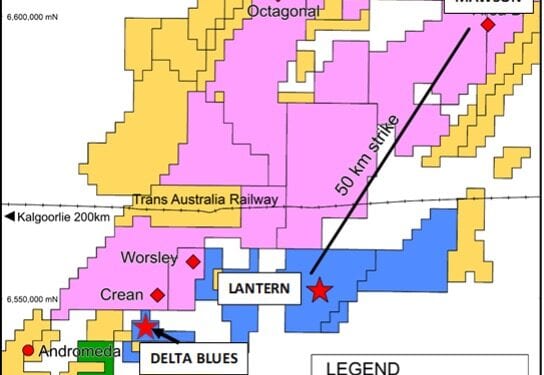Delta Blues Named As Top Quality Prospect
Galileo Mining Ltd(ASX: GAL) has identified a number of promising new drill targets through a successful EM survey over the Delta Blues Prospect in the Fraser Range region of Western Australia.
Three large and strong conductors have been modelled from the EM data at shallow depths between 95 and 170 metres below surface. Infill EM surveying of the newly identified targets is planned to be undertaken in conjunction with ongoing regional surveying at the Delta Blues Prospect.
Managing Director, Brad Underwood, said infill surveying is expected to be completed this quarter with drill planning to commence upon receipt and interpretation of the supplementary data.
“The new results from Delta Blues confirms our view that this is one of several top-quality prospects we have identified in the Fraser Range. We are developing a solid foundation of prospects with great potential for nickel mineralisation,” Mr Uncerwood said.
“It has been just two years since our first aircore drilling programme on our greenfields tenements in the northern Fraser Range.
“We are now in a position where we have targets ready for drill testing at our Lantern Prospect and new targets developing at our Delta Blues and Green Moon prospects.
“Our drilling programmes in 2021 are designed to test these targets with the aim of making new discoveries.”
Aircore drilling at the Delta Blues prospect in late 2019 intersected nickel prospective host rocks with weathered sulphides observed in petrology samples.
Modelling of EM data at anomalies DB1a and DB1b show strong conductors of 4,100 Siemens and 2,500 Siemens respectively. Conductor DB1a is 600 metres northwest of drill hole DBAC002 and conductor DB1b is 300 metres west-northwest of DBAC002. Both of these targets are located approximately 4km along strike from Legend Mining’s Crean Prospect where drilling has identified ultramafic intrusive rock units prospective for nickel sulphide mineralisation.
Modelling of EM data at anomaly DB2 indicates a conductor of 2,700 Siemens. The centre of this conductive model is 300 metres south of a six-metre band of semi-massive and net-textured sulphide intercepted in diamond core drilling by S2 Resources.
The presence of sulphides in DBAC002 and in S2 Resource’s drilling suggests that the cause of the conductive anomalies may well be related to additional sulphide mineralisation. However, conductive anomalies can also be formed by non-economic rock units including graphitic or sulphidic sediments. Further regional EM surveying and infill EM surveying is underway and is expected to be completed this quarter.
Drilling programmes will be planned following the receipt and interpretation of infill survey data.












